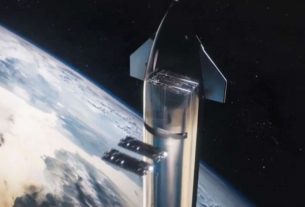A diffractive solar sail development project has moved into the third and final phase of NASA’s Advanced Concepts Program. The team behind the project now has two years to further develop this unconventional means of space propulsion.
The concept of the solar sail has been known for a long time. Like a sailboat using the wind to cross the sea, solar sails use the pressure exerted by sunlight to propel a craft through space. This means of propulsion could make it possible to cover longer distances, more quickly, while saving energy. The downside is that these reflective designs are usually very large and very thin, in addition to being limited by the direction of sunlight, which forces trade-offs between power and navigation.
In addition, for several years, researchers have been looking into another concept: that of the diffractive solar sail. As the name suggests, this type of structure would use small gratings embedded in thin films to take advantage of a property of light called diffraction which causes light to spread as it passes through a narrow aperture. This would allow the spacecraft to use sunlight more efficiently without sacrificing maneuverability.
A project under advanced development
One of these designs is being developed under the NASA Innovative Advanced Concepts program, which awards grants to support innovative space projects. The project led by Amber Dubill, from the Applied Physics Laboratory at Johns Hopkins University (Maryland), has just moved into the third and final phase of the program.
The team behind the project now has two years to further develop this unconventional means of space propulsion. The project also received an additional two million dollars. The researchers are now working on a demonstration mission.
“As we venture further into the cosmos than ever before, we will need innovative and cutting-edge technologies to carry out our missions,” NASA Administrator Bill Nelson said. “The NASA Innovative Advanced Concepts program helps unlock visionary ideas (like the novel solar sails) and bring them closer to reality.”
As part of NIAC Phases 1 and 2, researchers have already designed, created and tested various sail materials. The team also developed navigation and control schemes specific to a future solar mission. In the idea, these sails could allow the establishment of a constellation of satellites in orbit around the polar regions of the Sun. Taking advantage of a source of perpetual propulsion, these instruments could then perform unprecedented scientific observations.

Email: ben@satprwire.com Phone: +44 20 4732 1985
Ben has been listening to the technology news for quite some time that he needs just a single read to get an idea surrounding the topic. Ben is our go-to choice for in-depth reviews as well as the normal articles we cover on a normal basis.



